On the Road is a weekday feature spotlighting reader photo submissions.
From the exotic to the familiar, whether you’re traveling or in your own backyard, we would love to see the world through your eyes.
arrieve
There are no roads to Machu Picchu. You either take the train from Ollantaytambo, or you hike the Inca Trail. (Spoiler alert: We took the train.)
This is where it’s very helpful to be part of a tour, as Machu Picchu tourism is becoming more regulated all the time. You’re only allowed one carry-on sized piece of luggage on the train; the rest of our luggage was stored for us and was waiting at our hotel when we got back to Cusco. You need a timed ticket to visit the site, and they sell out, so having all of the train, bus and entry tickets taken care of for us was very helpful.

Another picture from the train, showing the Urubamba River and some snow-capped peaks.
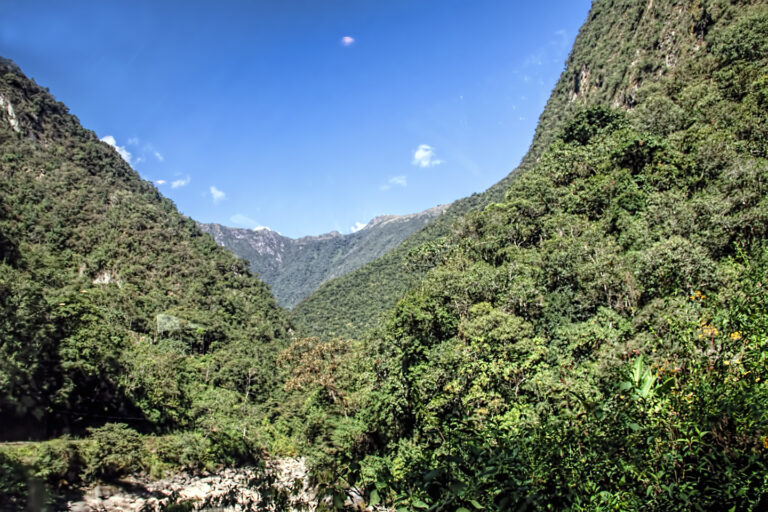
As you get closer to Machu Picchu, you move into the “eyebrow of the Amazon”–high jungle.
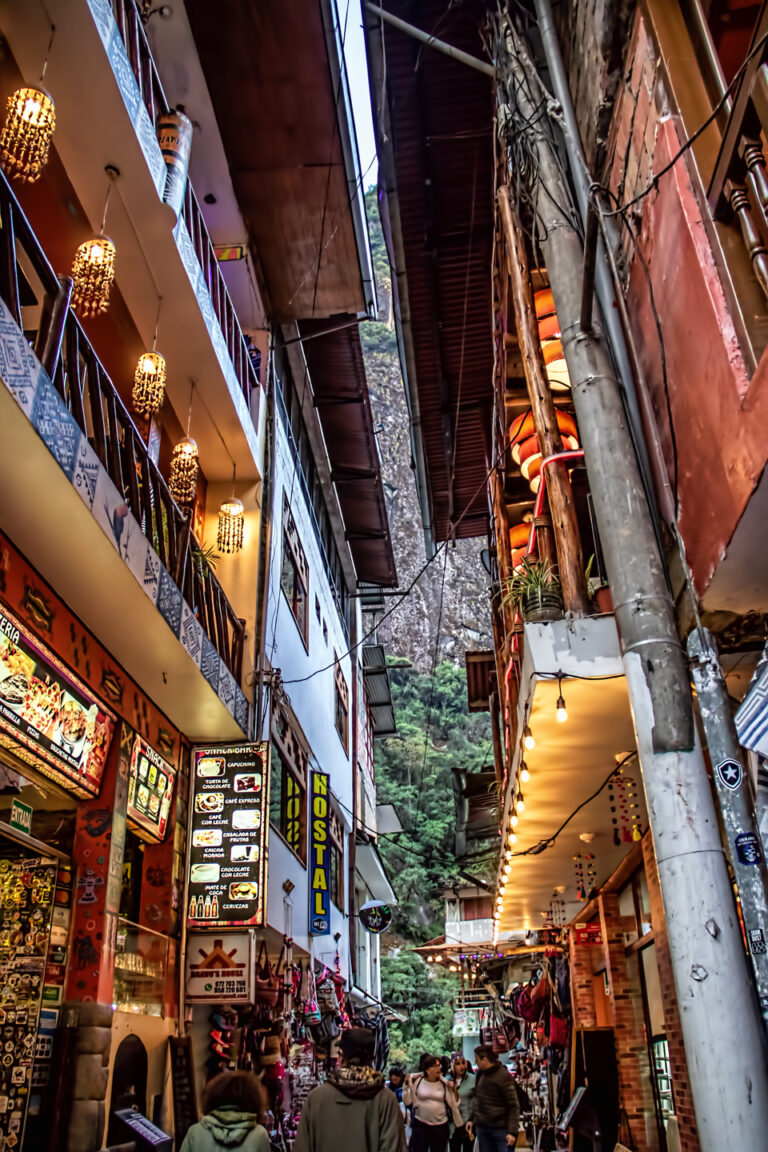
I like the old name Aguas Calientes better, but calling the town Machu Picchu Pueblo makes it clear that it’s definitely a tourist town—hotels, restaurants, shops—but also that it’s a place that only exists as a way station to Machu Picchu. There are no cars in town, only the buses that go up the mountain. And since you’re only allowed to bring one small suitcase, nobody is staying for long. (Many people actually do Machu Picchu as a day trip from Cusco.)
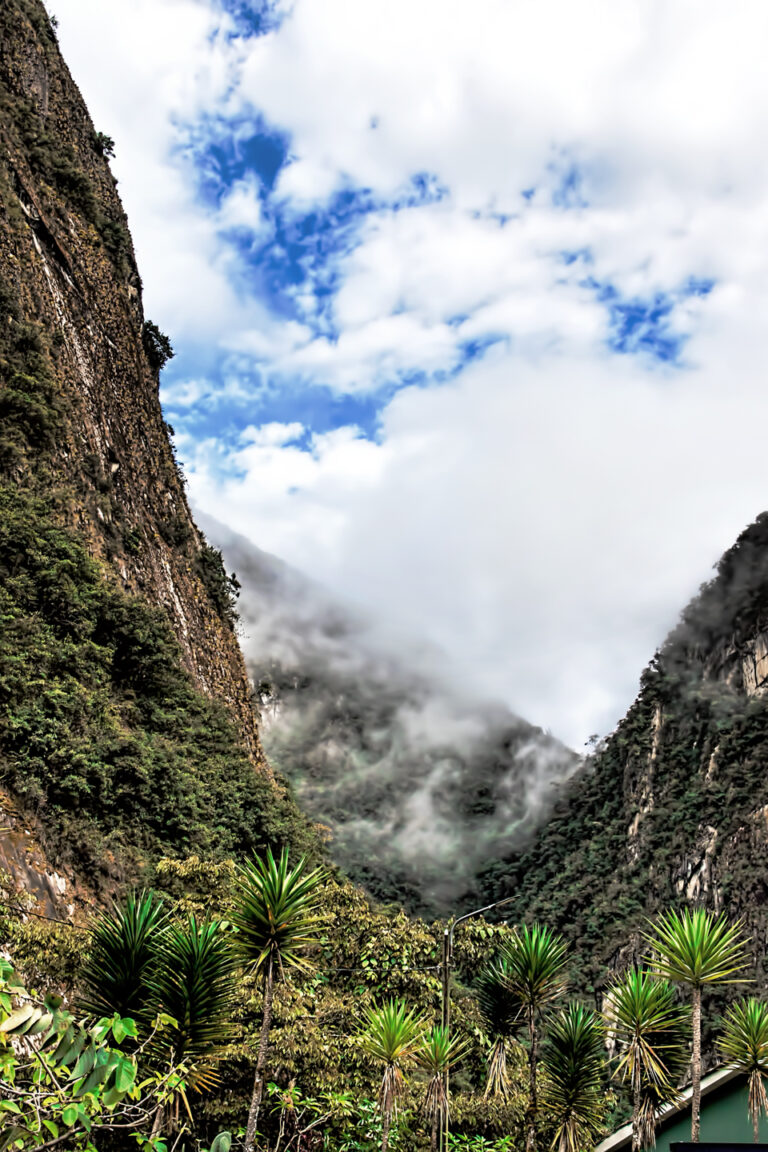
Many of the mountains surrounding the town are basically vertical.
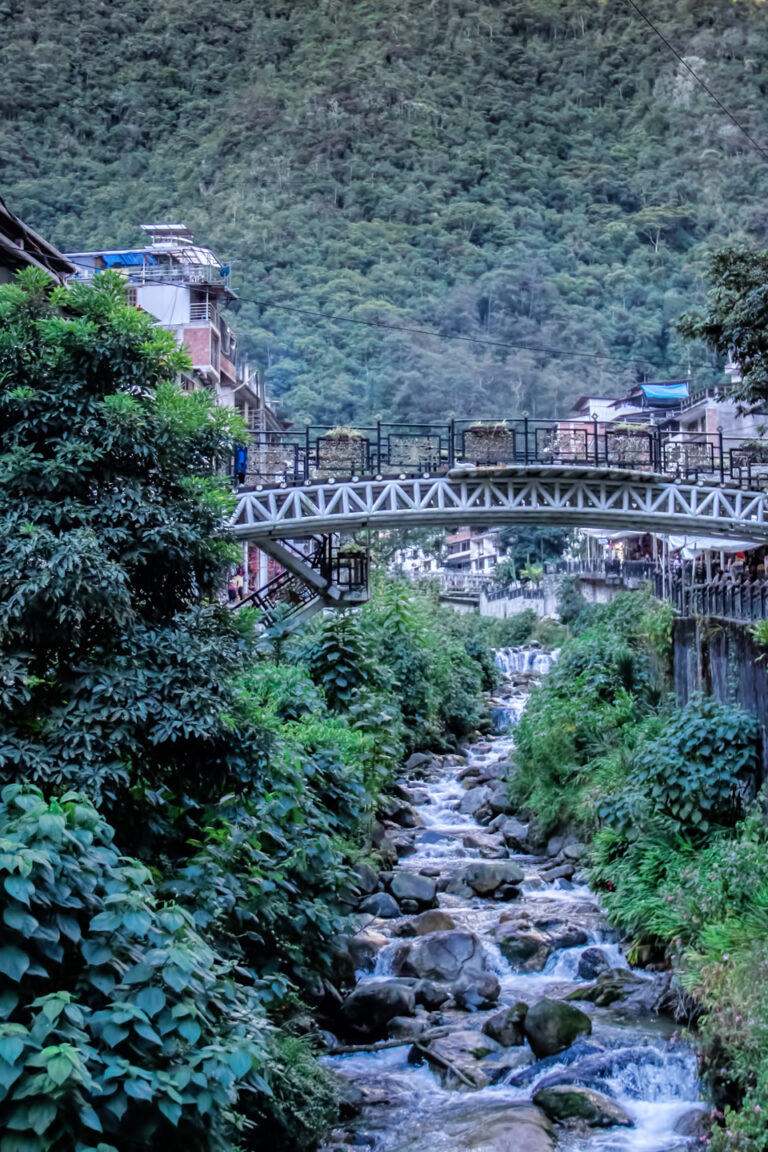
The Urubamba River runs through the middle of town. June is the dry season, so I assume the river (which is a headwater of the Amazon) looks more impressive after some rain.
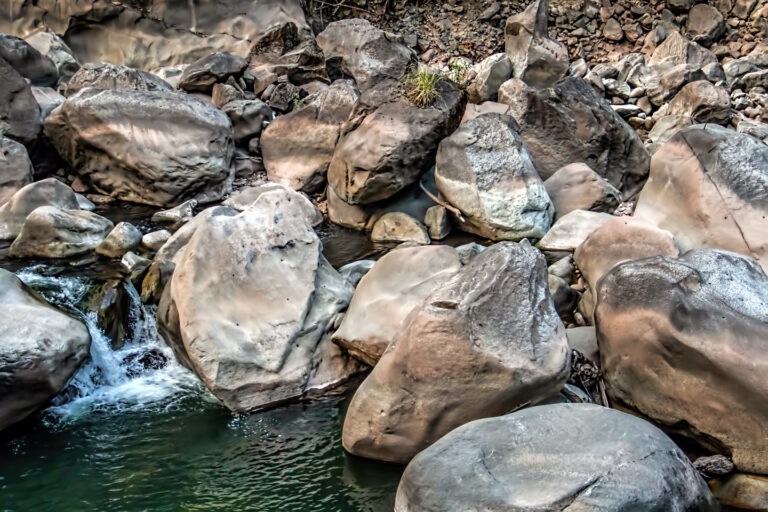
I loved the shapes and colors of the stones in the riverbed.

The local church.

A stall in the central market. If you’re in the market for acid green hiking boots, this is the place to go.

Baud
Excellent photos. I feel like I’m there.
eclare
Love the phrase “eyebrow of the jungle!”
JR
I always felt that Aguas Calientes was more interesting than it’s given credit for being. There are other tourist waypoints (e.g. Fort William in Scotland) that don’t have nearly the character.
AM in NC
Sure makes me want to visit. Thank you for posting these and for your captions!
Elma
Our tour passed through Cusco on the way in, but we spent two nights and a day in the Sacred Valley at Urubamba to get acclimated before we went to Machu Picchu. Didn’t help much with the altitude but it was a great experience. We even got to drink strawberry chica in one of the little roadside breweries.
randy khan
When we went, my wife and the friend who planned the trip with her decided we should stay at the hotel at the top of the mountain instead of in town. It was meaningfully more expensive than staying in town, but it was a great decision – we got much more time on the site, including basically being the last people there our first day. (The guards didn’t seem to care that we were there after official closing hours so long as we were moving towards the exit.) And it also made it easier to get slots for those of us who wanted to claim Waynu Picchu the next morning (not a particularly strenuous climb – we saw some younger people doing it in flip flops – and an excellent view from the top). I’d totally recommend staying at the top if anyone goes.
Dagaetch
Definitely a place I hope to visit someday. Thanks for sharing!
arrieve
@randy khan: Yes, if I ever go back (and despite the issues with the altitude I would do it again) I would definitely stay on top of the mountain. I would have loved to spend an afternoon just looking at the flowers and the birds.
cope
There is some very serious topography there. Thank you for the pictures and detailed account of your trip. I’m looking forward to the rest.
kindness
I understand the local indigenous population has a reputation for wearing colorful clothing. But I wonder if they wear what that shop offers or if those goods are more commonly spirited off to far away lands by visitors to represent their Peruvian adventure? That stuff would definitely sell in the Shakedown Street market outside a Dead & Co show.
Subsole
These are lovely photos.
The contrast is remarkable. The first pic of the mountains really captures how massive, desolate, and vaguely intimidating they are. Then you see the pics of the high jungle.
I imagine moving into a fog-shrouded forest after that rugged, desolate scenery must be surreal. Almost a revelation.
Also, I used to find the clothes a little…bold. I no longer think they’re bold at all. They’re necessary. I’d go mad without all that color, with nothing but dead, gray, looming rock and deep, crushingly-alive green to look at. Now, I see how pretty those clothes are.
Thank you for sharing your photos.
Subsole
@kindness:
That’s a good point.
I do think it’s curious that the church has bright, colorful doors to offset the gray and white walls. Around here, they usually leave them dark, heavy, imposing wood.
I may be overthinking it in the wrong direction, though.
Dyspeptic
@cope: this is really nice and brings back memories but I want to point out those rocks in the river are bigger than cars. The scale is tough to get but they are anazing
West of the Cascades
Beautiful photos!! Sad to hear the town’s name changed from Aguas Calientes, although it makes sense touristically. I had the good fortune to hike the Inca Trail back in 2005, and one of the highlights was soaking in the hot springs in town after coming down from the ruins (another highlight was being the first group into the ruins that morning, thanks to guides who hustled us up and got us fed and packed-out of the last campsite before reaching the Sun Gate, more than an hour before buses started dropping folks coming up from the valley at the site.
Grumpy Old Railroader
Ahhh Mannnnn. No pictures of the train. I haz a big sad
pat
I wonder what it was that made those people, thousands of years ago, decide
” Yeah, this looks like a great place to settle down. Look at all those rocks! We can build something HUGE!”
randy khan
Hmm. My comment got eated even though I was told it was posted twice. So here’s a reconstruction:
When we went to Machu Picchu, my wife and the friend who planned the trip with her decided we should stay at the hotel at the top of the mountain rather than in the valley below, and it was one of many excellent decisions they made for this trip. The hotel is pricey, but you get much better access to the site – we literally were the last people there on our first day, as nearly everyone has to leave for the last bus down the mountain (you do not want to walk down!) and we did not. We also stayed two nights, which gave us much more time and, among other things, let part of our group walk up Waynu Picchu (not really too bad a hike – some younger people were doing it flip flops) and see the view from there. So if you’re going, think about spending the extra money.
randy khan
@pat:
It wasn’t a real city, at least according to current thinking. It was somewhere the royals went during the summer. And it actually is at a lower altitude than a lot of the rest of the Incan empire; Cusco is several thousand feet higher.
One other thing that’s not obvious is that the area was farmed intensively. Those slopes all had farming terraces on them, which were discovered relatively recently, and so it was an important agricultural area. (One of the things you learn about the Incas is that they had a really organized society and that they used their human capital to build both crazy things like Machu Picchu and extremely useful things like terraces to flatten out the ground going up and down mountains. And a lot those terraces, built with stones but without mortar, are still in use today.)
Manyakitty
Amazing pictures! Definitely a bucket list trip!
pat
@randy khan:
Thanks. I have been looking for a book about these ancient cultures in the Amazon wilderness. Have to look again at the local library. Really interesting about the crops. Always wondered what they lived on.